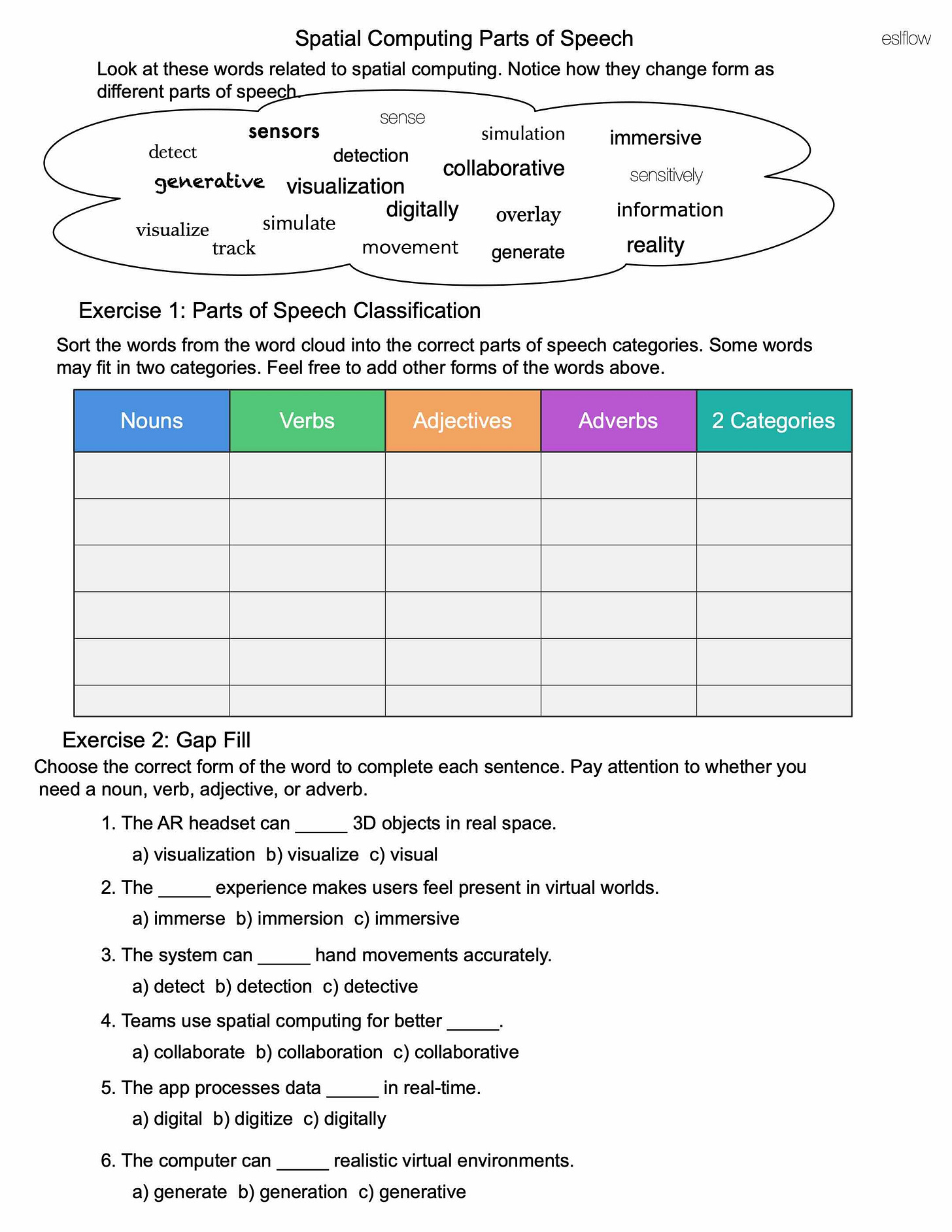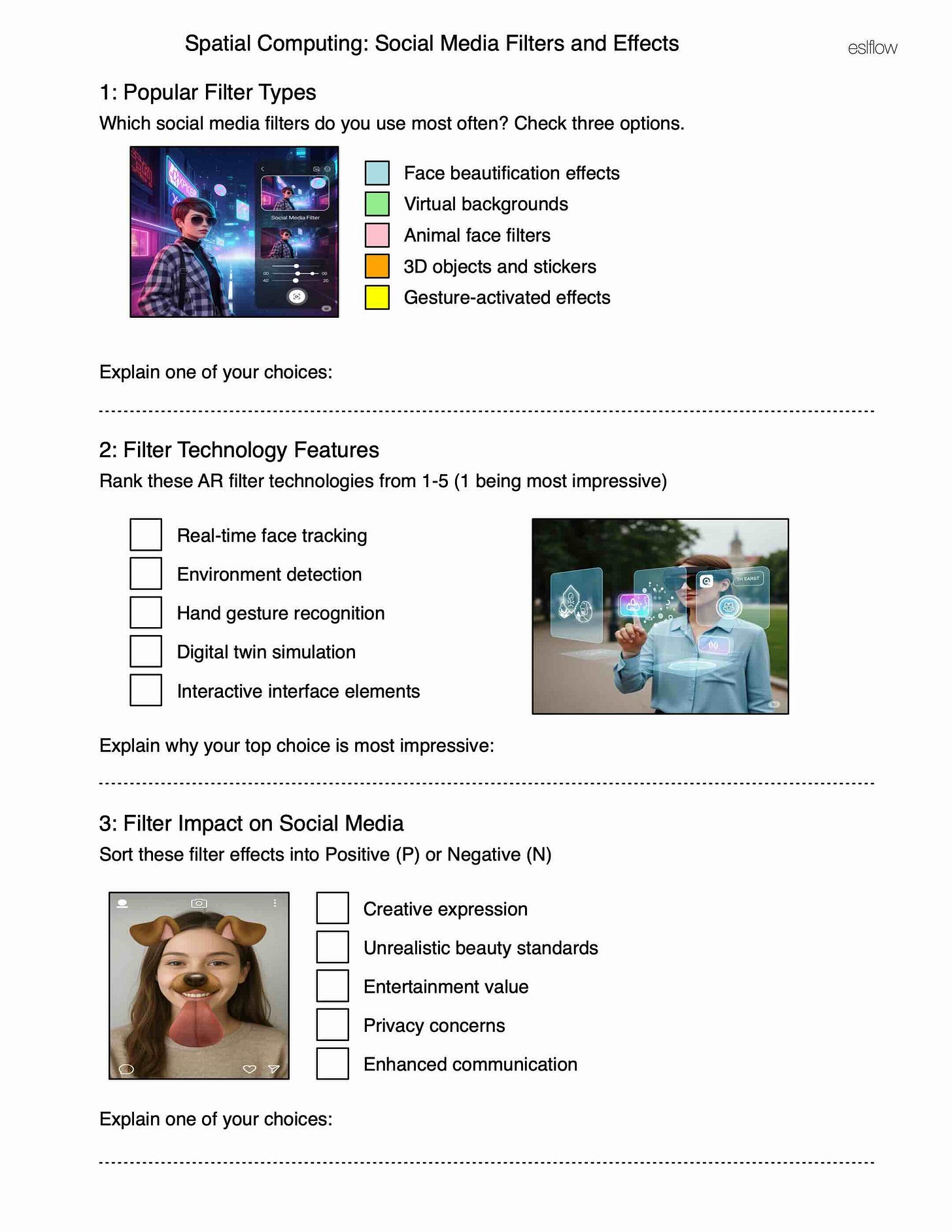Spatial Computing Lesson
And updates and improvements to Social Media Algorithms and The Urban Experience
Today's three topics explore the digital transformation happening around us right now. First, spatial computing is reshaping how we navigate cities and shop through our phones. Second, social media algorithms increasingly influence what we see and purchase daily. Third, urban development directly affects where we live and work.
Students can connect these concepts to their personal experiences—from using AR filters and location-based apps to observing city planning decisions in their neighborhoods. This approach helps build practical English skills for discussing technology's impact on modern life.
You can see the complete list of today's contents in the attached PDF.
Spatial Computing
Students use spatial computing every day without realizing they're engaging with a potential $620 billion industry. GPS navigation, AR shopping filters, and virtual try-on experiences are reshaping how we work and live. These new exercises help students learn technical vocabulary through technology they already use, while raising awareness of its broader significance and the opportunities it creates.
Visual Vocabulary
From boxing training in virtual gyms to AR glasses that provide GPS and location information, spatial computing vocabulary comes alive through visual contexts spanning medicine, entertainment, navigation, and collaboration. Each image captures a moment where digital and physical worlds intersect, revealing how technical terminology describes the invisible technologies reshaping human interaction with space and information.
Store Layout Redesign Grammar Role Play
This case study demonstrates how major retailers like IKEA and Walmart are implementing spatial computing to revolutionize store design processes. By examining a real-world scenario where AR technology creates digital twins of retail spaces, students explore how companies use sensors, gesture controls, and 3D visualization to optimize customer flow and layout efficiency. The dialogue showcases workplace conversations about spatial computing implementation while building future tense grammar skills through practical business scenarios.
Spatial Computing Language Exercises
When you read or discuss spatial computing, the same technical words keep appearing in predictable patterns. Learning how these words function as different parts of speech and which words naturally combine helps you communicate more professionally about technology.
Critical Thinking
You probably use filters without thinking about the complex technology behind them. When your phone recognizes your face in real-time or adds virtual objects to your camera view, that's spatial computing at work. This exercise helps students recognize the sophisticated spatial computing technology behind everyday social media use. By analyzing filter types, ranking AR features, and evaluating social impacts, students move beyond passive consumption to understanding how face tracking, gesture recognition, and environment detection actually work.
Social Media Algorithms
Visual Vocabulary
Social media algorithms shape what billions of people see daily, making algorithm literacy essential for digital citizenship and professional communication. This visual vocabulary explores the mechanisms behind personalized feeds, targeted advertising, and viral content distribution that influence consumer behavior, political opinions, and social interactions.
Dragon's Kitchen Social Media Grammar Role Play
Every business today needs social media to survive. Your students will hear these marketing terms constantly—in their jobs, in the news, and when they start their own businesses. This role play puts them in a realistic conversation between a restaurant owner and marketing manager. They learn the exact language professionals use when discussing how to reach customers online.




